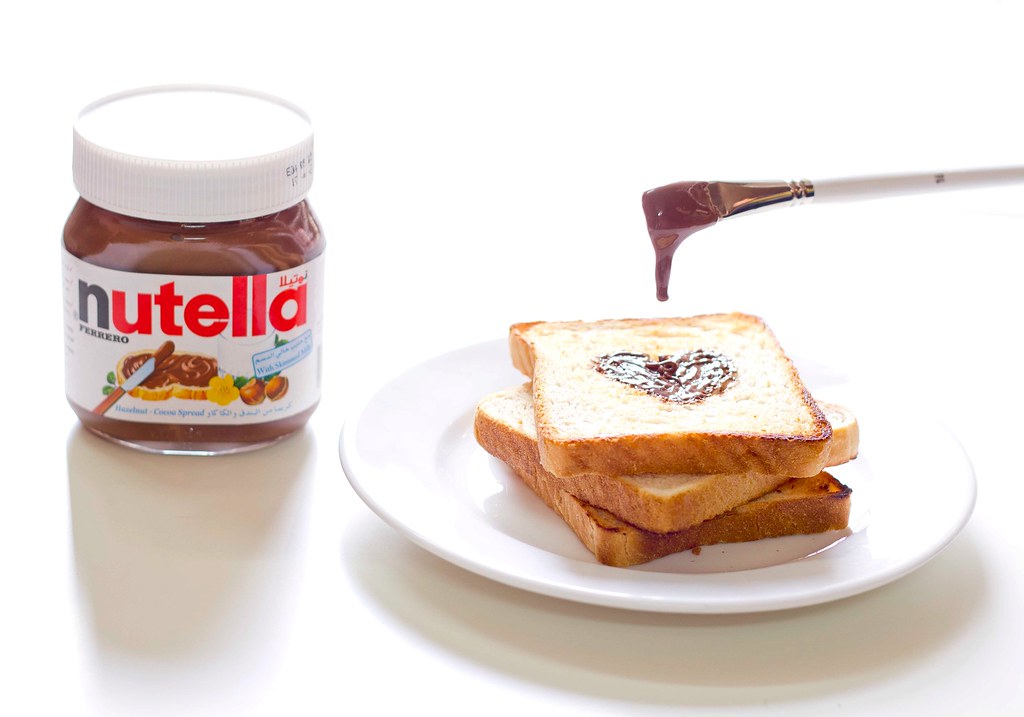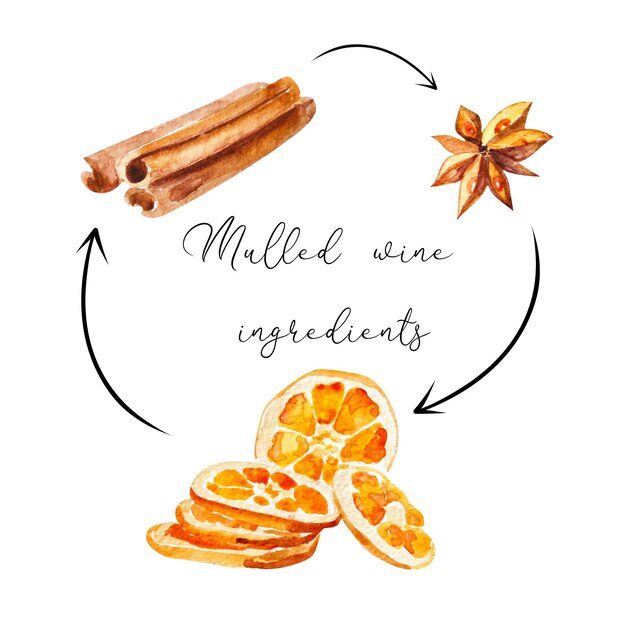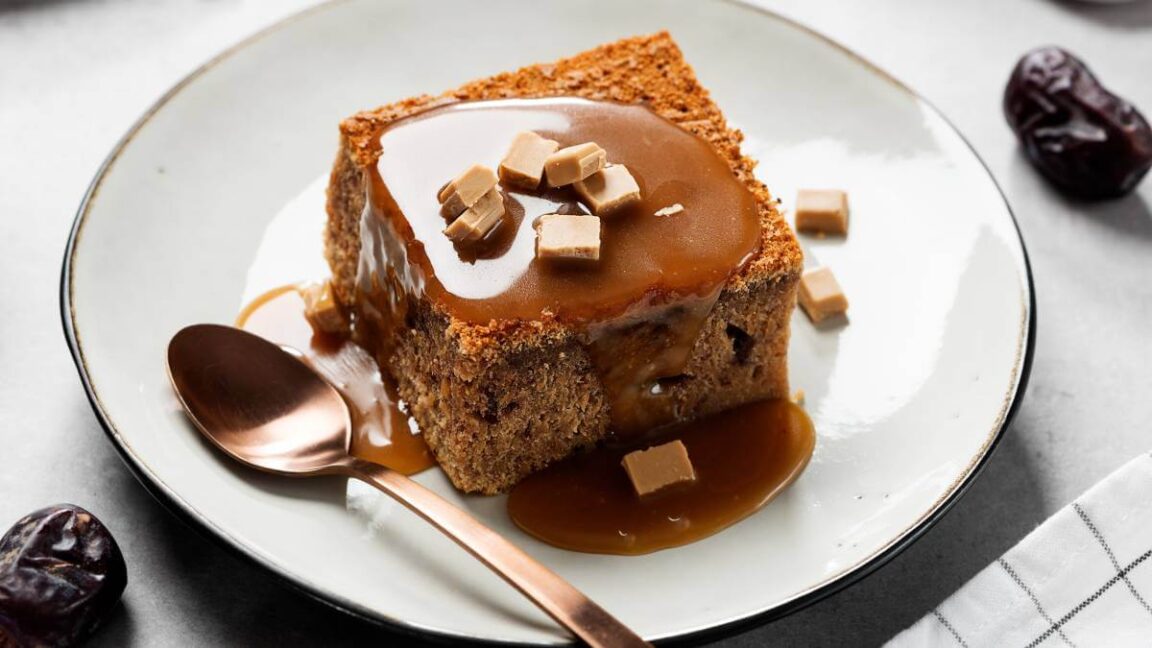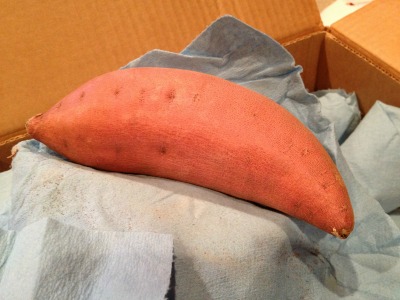The flavorsome world of Indian cuisine is often characterized by its bold and vibrant flavors, and in most cases, the added kick of spiciness. Integrating an array of spices and flavors, Indian food has managed to capture the hearts and taste buds of food enthusiasts worldwide. But the lingering question persists: why is Indian food so sinfully spicy? This article aims at throwing some light on this burning question.
A dive into the history of Indian cuisine reveals how this enchanting world of spices has grown over centuries, deeply rooted in cultural, traditional, and regional influences. It’s not just the mere addition of ‘spicy’ ingredients that create these flavors; it’s the technique of using them, the blending of different elements that give Indian food its fiery edge. This piece goes beyond the surface and delves into the secrets hidden behind the heat of Indian dishes.
Integral to any discussion about Indian food and its spiciness is an exploration of the impact of native and imported ingredients on shaping the flavor profile of Indian cuisine. Spice trade connections have significantly contributed to the development and evolution of Indian recipes. The importance of regional geographical environments for the growth and cultivation of different spices cannot be overstated.
Apart from investigating the origin of the spiciness, this article will also touch on the cherished role of spices in Indian culture. Known not only for their culinary attributes but also for their medicinal values, spices are deeply intertwined with Indian lifestyle and customs. Truly, the love for spices in India extends beyond the kitchen.
DECIPHERING THE ENIGMA: WHY IS INDIAN CUISINE THAT HOT?
Indian food, recognizing worldwide for its bold, hot, and fiery flavors, often triggers the question: what makes it so spicy? To fully grasp why Indian cuisine embraces such strong heat, it’s essential to delve into its culinary lore, rich with an array of spices.
The fiery punch of Indian food primarily originates from chilies. Native to South America, chilies found their way into Indian cuisine via Portuguese traders during the 15th century. In the broad Indian cuisine landscape, green, red, and dried chilies play a crucial role. They add not only heat but also lend an alluring color to the food. The usage varies across the country, with coastal and southern regions leaning heavily on chilies compared to their northern counterparts.
However, the spiciness of Indian food is not just limited to chilies. A variety of other spices are weaved into the culinary tapestry to enhance the complexity of the taste. For instance, besides the vegetarian food favorite ginger, black pepper is often used to add a peppery spice and aroma. Additionally, pungent spices such as cloves, cinnamon, and black cardamom are favored in meat dishes to balance out the fattiness.
Even the incremental use of turmeric, mustard oil, asafetida, and fenugreek can significantly ratchet up the heat in Indian dishes. Indian cuisine is brimming with such diverse pungency because each spice brings a unique flavor to the dish, complementing and sometimes enhancing the tastes brought by other ingredients.
Moreover, spicy Indian food also has considerable health benefits! For example, Capsaicin, found in chili peppers, acts as an antioxidant. Various spices like turmeric and ginger, with their anti-inflammatory properties, aid in boosting immunity.
- Chilies: Brings heat and color.
- Black pepper and Ginger: Add a peppery spice and aroma.
- Cloves, Cinnamon, Cardamom: Add pungency and balance to meat dishes.
- Turmeric, Mustard oil, Asafetida, Fenugreek: Enhance heat and complexity of the taste.
In conclusion, the spiciness in Indian food stems not only from chilies but a broad palette of spices, demonstrating the culinary finesse and diversity of Indian cuisine. This complexity allows Indian food to deliver the unmistakable punch that we experience and leaves our palates tingling.
THE INFLUENCE OF AUTHENTIC INDIAN SEASONINGS IN INTENSIFYING THE FLAVOR
The innate spiciness in Indian cuisine can largely be attributed to the profound role of conventional Indian spices. While the heat quotient varies by region, certain native seasonings are predominant across the country and significantly contribute to its fiery palette. Let’s delve into the magic of these popular ingredients and how they skyrocket the spiciness of Indian dishes.
THE QUINTESSENTIAL INDIAN SPICES
Indian cuisine is a grand blend of many flavors and spices, each with their traditional and medicinal values. But some spices are specifically known for creating that unique zesty experience. Spices like chili powder (also known as red chili pepper), black pepper, and mustard seeds play crucial roles in bringing about a spicy kick.
- Chili Powder – This bright red powder does not need an introduction. Known as the primary source of heat in Indian dishes, not only does it add color, but it also provides the very essence of spiciness. Chili powder is made by grinding dried red peppers and is used in almost every Indian dish.
- Black Pepper – Known as the ‘king of spices’, black pepper is often used in small quantities but contributes significantly to the overall pungency. Kitchens in Southern India use black pepper extensively to heat up culinary treasures.
- Mustard Seeds – This spice lends a unique pungency, rather than heat, to the dishes. However, in certain dishes, mustard oil is used for cooking, indirectly raising the heat quotient.
Besides these, other ingredients like ginger, garlic, fenugreek and cumin add to the spicy palette of Indian cuisine even though their primary function is to enhance flavor.
The intensity of these spices used in Indian culinary preparations varies according to personal and regional preferences. The heat from Indian spices not only contributes to the distinctive flavor but also has numerous health benefits, such as boosting metabolism and enhancing digestion.
In essence, the conventional Indian spices significantly define the spiciness level in Indian food. So the next time you relish an Indian curry or a biryani, remember to credit the traditional Indian spices for that delicious heat!
DECIPHERING THE HEAT LEVELS OF INDIAN GASTRONOMY: SPOTTING THE CHILLI FACTOR DIFFERENCES
India is renowned for its vibrant, color-popping, tongue-tickling, spicy cuisine. At the heart of this gastronomic tsunami lies an array of chillies and spices, each varying in heat and flavor. If you’ve ever wondered how fiery your curry or biryani is going to be, it’s time to understand the different heat levels in Indian culinary art.
Integral elements of Indian food are spices like cayenne pepper, turmeric, cardamom and much more. But the star of this flavorful riot that adds the much sought-after heat is typically Indian chillies. They range from mild ones such as Kashmiri that are used for their vibrant red color more than their heat, to the lung-searing ‘Bhoot Jolokia’ or Ghost Pepper, recognized as one of the hottest chillies in the world.
PEPPER POWER: ADDING HEAT NOT JUST TASTE
Before embarking on your culinary spice journey, understanding the Scoville Scale is crucial. Created by pharmacist Wilbur Scoville in 1912, this scale measures the pungency and heat of chilli peppers and spicy foods. In this scale, sweet bell peppers score a zero, while the Bhoot Jolokia scores a scorching 1.04 million Scoville Heat Units (SHU).
Indian cuisine incorporates chillies at different points in the Scoville Scale. For instance, the mild ‘Byadgi’ chilli at 1000-2000 SHU is popular in South India to add warm, rich colors without raising the heat too much. ‘Guntur’, favored for pickling and flavorful curries is considerably hotter at 35,000 SHU.
So, the next time you sit down to savor Indian dishes, understanding spiciness scale in the culinary delights can make your gastronomical journey more enjoyable and less intimidating.
The beauty of Indian cuisine is in its versatility and ability to customize. You can choose your desired heat level, with each level adding a different dimension to your food. Remember, the heat of Indian cuisine is not designed to numb your senses but to titillate your taste buds and leave you craving more.
EXPLORING THE HEALTH PROSPECTS OF THE FIERY FLAVOR OF INDIAN CUISINE
REAPING THE HEALTHFUL REWARDS
As you delve into the piquant tang of Indian food, you might also enkindle a host of health benefits. Foremost among these is the potential for improved digestion. Spicy foods provide a natural boost to our digestive systems, aided by the myriad of robust spices used in these dishes. These spices, including turmeric, ginger, and chili peppers, to name just a few, ramp up the stomach’s production of digestive juices, promoting more efficient food processing and nutrient absorption.
Furthermore, spices found in Indian dishes can pack a substantial antioxidant punch. For instance, curcumin in turmeric boasts powerful anti-inflammatory properties, potentially warding off a broad range of diseases. Cumin and chili peppers add to this wellness shield by supplying a wealth of vitamins, notably vitamins C and E.
Finally, yet importantly, Indian food might even aid in weight management. Capsaicin, found in chili peppers, speeds up metabolism and can reduce feelings of hunger, shedding unwelcome pounds as it amplifies your palate’s pleasure.
EXERTING CAUTION: POTENTIAL PITFALLS
Yet, as with any culinary delight, some need to tread carefully around Indian cuisine’s fiery flavor. Those with a sensitive palate may find the intense heat a hurdle, occasionally culminating in digestive discomfort. Indulging in these dishes could potentially exacerbate conditions like gastritis or peptic ulcers.
In the same vein, overzealous consumption of fiery grub can lead to an upset stomach, nausea, or even heartburn. It is crucial, therefore, to gauge your tolerance to heat and plan your meals accordingly.
Lastly, some Indian dishes are somewhat high in fat and salt content, which could pose risks for those with conditions such as hypertension or high cholesterol. Careful selection of leaner, less salty options amidst the vast array of Indian delicacies can, however, mitigate these concerns.
In conclusion, while the health-enhancing potential of spicy Indian food is undeniable, considerations around individual tolerance and existing health conditions are imperative. A generous sprinkle of prudence along with a hearty serving of those fiery curries can go a long way in ensuring that you find the delicate balance between indulging your taste buds and maintaining your health!
FAMED INDIAN CUISINE AND THEIR CORRESPONDING SPICINESS LEVELS
Indian cuisine, famous for its rich flavors and intense heat, is loved by many around the world. A key factor contributing to the spiciness is the use of various kinds of chillies. To quantify the spiciness, or ‘heat’, of these dishes, the Scoville Heat Units (SHUs) is used. Developed by Wilbur Scoville, it measures the piquancy (spicy heat) of chilli peppers and other spicy foods.
NOTEWORTHY INDIAN FOODS AND THEIR SPICE INTENSITIES
Vindaloo: Imbued with a blend of vinegar and spices, Vindaloo is one of the spiciest Indian dishes. Originating in Goa, it usually involves pork, but can be made with other meats as well. The fiery heat comes from the combination of dried red chillies and black mustard seeds, giving it an estimated spiciness of over 100,000 SHUs.
Phall: A beast even in the world of spicy Indian cuisine, Phall stands out with a whopping estimated 1,000,000 SHUs. Originally a British-Indian invention, it’s made with plenty of habanero or Scotch bonnet peppers. It’s not traditional Indian fare, but has earned its reputation in being a challengers for lovers of spicy food.
It’s important to remember that variations in recipes will cause these SHU ratings to fluctuate. Furthermore, personal tolerance to spicy food will greatly affect how ‘hot’ one perceives a dish.
- Vindaloo: Over 100,000 SHUs estimated
- Phall: Approximatley 1,000,000 SHUs estimated
Note: While most dining experiences will serve these dishes quite hot, the preparation methods can be modified for less spicy versions.
CONQUERING THE HEAT: PRACTICAL GUIDELINES FOR MANAGING THE INTENSITY OF INDIAN CUISINE
Indian cuisine is known and appreciated worldwide for its rich flavors, vibrant colors, and, of course, its notorious heat. The piquancy levels of Indian dishes have contributed greatly to their global popularity. However, for those unaccustomed to high levels of spiciness, consuming these dishes can prove to be quite a challenge. This article offers some useful methods for consuming and enjoying spicy Indian meals, even if your tolerance is not yet up to par.
EASING YOUR WAY INTO THE FIERY TASTE
There are a number of techniques to ease the burning sensation and help you gracefully navigate your way through the heat of Indian dishes. Here are five practical tips:
- Dairy Products: Dairy products like yogurt, milk or cheese do an excellent job in calming the burning sensation in your mouth. One popular dairy specialty used in Indian cuisine is Raita, a cooling yogurt-based side dish, often containing cucumber, mint or onion.
- Lemon Juice: The acidity in lemon juice can neutralize the activity of the spicy molecule capsaicin, which is responsible for your mouth’s burning sensation. Squeezing a bit on your meal can considerably reduce its spiciness.
- White Rice: This staple of the Indian diet is mild, dense, and can help to dampen the spice’s impact. It works by absorbing some of the capsaicin present in the dish.
- Sugar: Like lemon juice, sugar can help combat the effect of capsaicin. A sprinkle of sugar or even a sip from a sugary drink can provide immediate relief.
- Go slow: Allow your palate time to adjust. Enjoy the taste, but respect your threshold. It’s perfectly okay to take a break if the spice becomes overwhelming.
In conclusion, Indian cuisine is a culinary adventure, rich in flavor and spices. Following these steps can help you to balance the intensity of the spice while still delighting in the cultural and gastronomic adventure that Indian food has to offer.
FAQ: WHAT MAKES INDIAN FOOD SPICY
What is the first key thing in handling spicy Indian food?
The first key thing is knowing your spice level. Do not push yourself too hard. Start with mild spices and gradually increase the spice level to your tastes.
What can I do if I have unbearably spicy Indian food on my plate?
If you find your food is too spicy, try pairing it with dairy products like yogurt or milk, which are known to counteract the heat. Plain rice or bread are also good for mellowing down the spicy flavors.
Are there any specific Indian dishes that are typically less spicy?
Yes, dishes like Butter Chicken, Tandoori Chicken, and Aloo Gobi generally have a milder flavor and are less spicy.
How can I adjust the spice level when cooking Indian food at home?
When cooking at home, control the amount of hot spices like chili pepper or cayenne powder used in the dish. You can always start with lesser amount and adjust to your liking.
Does drinking water help when food is too spicy?
Surprisingly, drinking water won’t help much with the heat since it doesn’t dissolve capsaicin, the compound which makes chili hot. Dairy products or foods high in fats or oils can help dissolve the capsaicin and reduce the heat.
Is there a way to reduce the spiciness of an already prepared dish?
Yes, adding dairy products, such as yogurt, cream, or coconut milk, or acidic items like lime or vinegar to the spicy dish can help to neutralize the heat.
What impact does cooking method have on the spiciness of Indian food?
The cooking method can greatly influence the spiciness. The longer the spices are cooked, the greater their heat and flavor will be. So if you want less heat, add spices later in the cooking process.
Why do Indian meals often include a side of yogurt?
The yogurt, also known as raita, serves two main functions. First, it adds a creamy and tangy flavor to complement the spices. Secondly, it provides a cooling effect to counter the heat from the spicy dishes.
Why is Indian food so spicy and what spices are commonly used in Indian cooking?
Indian food is often perceived as spicy due to the variety of spices used in Indian cooking. Some popular Indian spices include garam masala, red chili powder, coriander, ginger-garlic paste, and turmeric. The use of spices not only makes the food taste spicy but also aromatic and flavorful.
Is all Indian food always spicy?
No, all Indian food is not always spicy. While many Indian dishes are spicy, there are also numerous savory dishes and desserts that are mild. The spiciness varies from region to region and also depends on personal preferences.
What’s the difference between North Indian and South Indian cuisine in terms of spice usage?
North Indian cuisine, influenced by the Mughals and Europeans, often features creamy, savory dishes with a blend of ground spices like garam masala. South Indian food, on the other hand, such as Andhra and Chettinad cuisines, is known for its use of spices like mustard seeds, curry leaves, and tamarind, making it spicier and earthy in flavor compared to North Indian dishes.
I’ve heard of Tikka and Tikka Masala. Are they the same?
No, they are distinct. Tikka refers to marinated pieces of meat or paneer grilled or cooked in a tandoor. Tikka Masala, on the other hand, is a creamy, tomato-based curry in which tikka (usually chicken) is added. It’s flavored with a range of spices including garam masala and ginger-garlic paste.
I’m looking for authentic Indian food. How do I distinguish it from fusion or adapted versions?
Authentic Indian food adheres to traditional recipes and uses a specific range of spices known to the cuisine. If you’re looking for authenticity, visiting an Indian grocery or an Indian restaurant known for traditional dishes is your best bet. Checking reviews or seeking recommendations can also help.
What is paneer and how is it used in Indian cooking?
Paneer is a type of Indian cottage cheese that doesn’t melt. It’s a common ingredient in both North and South Indian cuisines. In dishes, paneer can be grilled, fried, or simmered in curries. Some popular paneer dishes include Paneer Tikka, Paneer Butter Masala, and Palak Paneer.
Why do Indian dishes vary so much in their spice levels and flavors from region to region?
India is a vast country with diverse cultures, climates, and histories, which influence the usage of spices and cooking methods. For instance, Northern India, with its colder climate, has creamy and rich dishes, while coastal regions use more coconut and fish. The influence of foreign invaders, like the Mughals and Europeans, also played a role in shaping regional cuisines.
Are there one-spice dominant dishes in Indian cuisine?
Yes, while many Indian dishes use a blend of spices, there are dishes known for their dominant use of one spice. For example, “Laal Maas” from Rajasthan is known for its fiery taste primarily from red chili powder, making it quite spicy.
Is there a reason beyond taste for eating spicy food in India?
Yes, apart from the taste, spices used in Indian cuisine have medicinal and preservative properties. The hot climate in many parts of India makes food susceptible to spoilage, and spices, especially the spicy ones, help in preserving food and killing harmful microbes.
Are there any vegetable dishes in Indian cuisine that are particularly known for being spicy?
Yes, many vegetable dishes in Indian cuisine can be quite spicy. For instance, dishes from the Chettinad region or Andhra vegetable curries are known to be spicier due to the generous use of red chili powder and other spice blends.





